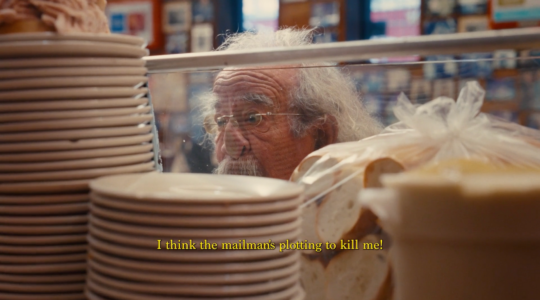I believe it was William L. Shirer who said that if someone had pulled down Adolf Hitler’s pants in public in 1923 he never would have become Reichschancellor. Ridicule, in the right hands, is a powerful weapon. That was probably what was going through Charles Chaplin’s mind when he began work on “The Great Dictator” in 1938.
It is almost impossible to mentally reconstruct the world in which Chaplin’s film was made and released in 1940. It was a world in which Jews were openly persecuted in Germany and the European countries the Nazis occupied. It was a world in which right-wing American politicians were damning the mass media for its Jewish “dominance” — the reason, they argued, that the film and broadcasting industries were conniving to rush America into a European war. It was a world in which two bitter adversaries were about to engage in the unlikeliest of public duels.
Charles Chaplin and Adolf Hitler were born four days apart, the greatest clown in history and the greatest criminal. They were both instantly recognizable for their toothbrush mustaches, and the physical resemblance between them was slight but instantly noticeable. Both were born into poverty and raised in straitened circumstances. Each was a self-made man, and one might argue that both had singular genius in their given fields — Chaplin’s the mimetic arts, Hitler’s the demonic ones.
Perhaps it was inevitable that Chaplin would feel obliged to take on Hitler. Certainly no one else in the American film industry could have done so in as frontal an assault. Chaplin was the most instantly recognizable human being on the planet, a filmmaker with such complete control over his own work that he didn’t make a sound film until 1936, and that film, “Modern Times,” had no on-screen dialogue; it was Chaplin’s blatant raspberry at the “talkies.” The coincidences and the realities intersected and the deeply humanistic Chaplin gladly accepted the role of public protector of the innocent.
In an era in which Oliver Stone regularly peddles his cut-rate fantasies of living or recently deceased famous men (Nixon, John Kennedy, the Bush family), and TV assails us with tawdry docudramas torn from the front page (mostly, one suspects, of supermarket tabloids), it is hard to comprehend how daring Chaplin’s decision was. But what makes “The Great Dictator” truly audacious is that it is the first American film that puts in the foreground the persecution of the Jews under the Nazis. No other American film about Germany between the wars even uses the word “Jew,” and until late in the war only two others — Leo McCarey’s “Once Upon a Honeymoon” and Ernst Lubitsch’s “To Be Or Not to Be” — would dare repeat the gesture.
For Chaplin, “The Great Dictator” was more than just his personal barrage against Hitler. It was a bittersweet farewell to the Little Tramp, the Everyman who embodied Chaplin’s fans, their dreams and their hopes. Reconceived in “Dictator” as the barber who is one of the film’s dual protagonists, he is gentle, modest, good-hearted and, pointedly, Jewish. His mirror image is the paranoiac anti-Semitic dictator Adenoid Hynkel, the Phooey, also portrayed by Chaplin.
The film is structured around the seemingly simple opposition between the two Charlies: Hynkel with his dreams of world domination, his dehumanizing of his subordinates and his dark, almost brooding cynicism; and the barber, soft-spoken and a little befuddled, wanting only to live in peace and to ply his trade.
After the war, Chaplin said that had he known then what was later learned about the Shoah, he could never have made the film. Had he not done so, it is hard to imagine that anyone else would have. Chaplin put $2 million of his own money into “The Great Dictator,” no small sum at the tail end of the Depression, and he risked his considerable public prestige and popularity. The film itself is a series of bold risks in writing and directing, going against the grain of conventional film narrative. Thanks to the audacity inherent in that risk-taking, “The Great Dictator” is one of the very few American films about the Shoah that really works, even if Chaplin was unable to imagine the horror of the reality. (Then again, who did in 1940?)
Chaplin chooses to split the structure of the film narrative between the barber, returned from WWI after 10 years of amnesia, and the rising Hynkel. Neither character is in control of the narrative, a bold move in traditional film terms, especially in the studio period. Conventional film narrative is structured around issues of power and control: who is “telling” the story we see before us? The French film critic Pascal Kané called this “the master position” in the narrative.
Chaplin also defies convention by assigning at least half of the “master position” to a Jew, a marginal figure in the societies for whom the film was made. And he lets him win control of the narrative at the end! To understand how radical that simple choice is, consider the pro-Indian westerns of the ’50s, almost all of which end with their Native American protagonist dead or, in some fundamental way, assimilated to the point of “whiteness.” Or “Schindler’s List,” a film about the Shoah whose protagonists are a Nazi industrialist and a concentration camp commandant.
Chaplin sidesteps this problem until almost the end of the film. He actually divides screen time between the two Charlies fairly evenly, allowing each a moment of mastery — Hynkel’s ballet with the globe, the barber shaving a customer in time to Brahms’s Hungarian Dance No. 5.
But it is the barber — or more accurately, Chaplin himself, bidding a loquacious farewell to his Everyman — who gets the final word. The barber has replaced Hynkel through a series of misadventures and must now give the dictator’s grand speech. And he does, indeed, deliver an impassioned address, calling for an end to hate and greed and urging his fiancée Hannah (played by Paulette Goddard who was, significantly, a Jewish actress) to look up at the sky where “the clouds are parting.” The film ends on a dissolve to Hannah’s uplifted face, her eyes gleaming with tears, before a dissolve to the end titles.
Support the New York Jewish Week
Our nonprofit newsroom depends on readers like you. Make a donation now to support independent Jewish journalism in New York.
There is boldness to that ending that, despite its rhetorical naiveté, is unbearably powerful. No other American filmmaker of this generation would have dared end a film with a six-minute speech. No other American filmmaker would have placed the film’s issues so deliberately in the foreground or presented them in such abstract terms. Few other filmmakers, even today, would end on such an open note, with the protagonist essentially departing from character to speak directly as the filmmaker.
At the end of Bertolt Brecht’s “Galileo,” the scientist upbraids his protégé: “There is no such thing as a work of science that only one man can write.” But there is such a thing as a work of art that only one man (or woman) can create. Only Chaplin had the clout, the money and desire to make “The Great Dictator.”
Only Chaplin had the genius.
The New York Jewish Week brings you the stories behind the headlines, keeping you connected to Jewish life in New York. Help sustain the reporting you trust by donating today.




